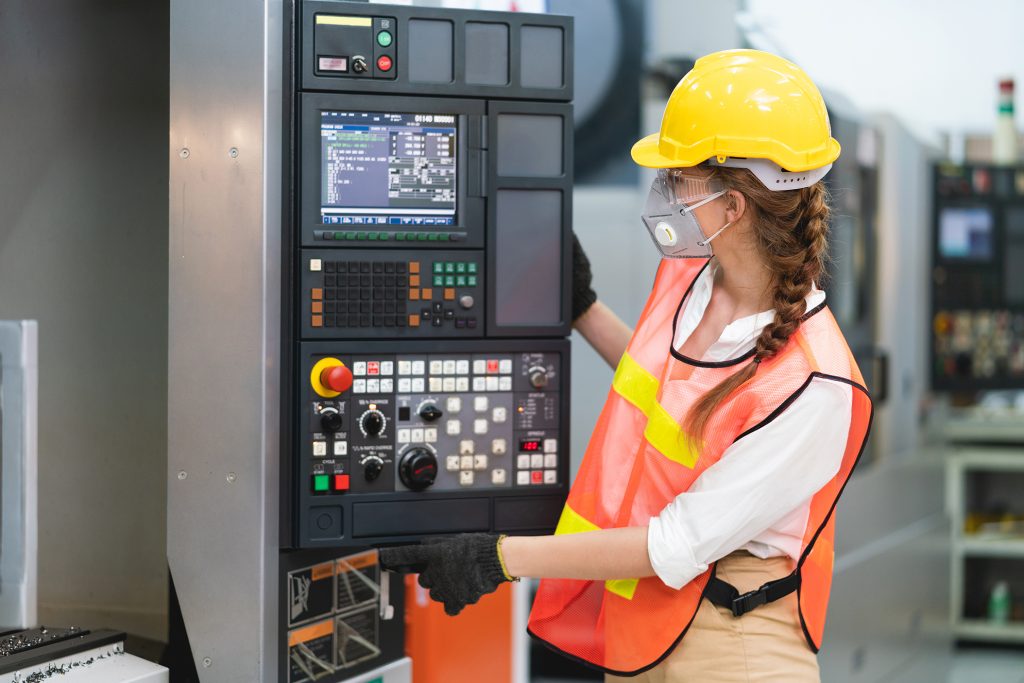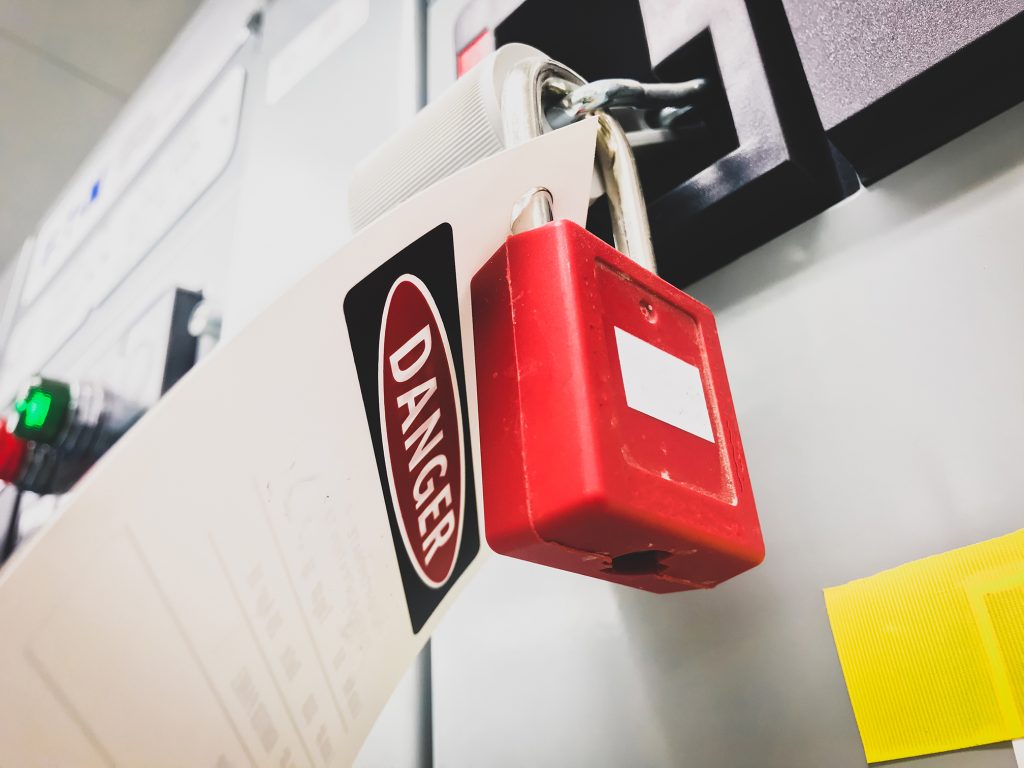
Machine safeguards and hazard control in manufacturing
There’s a reason why working with heavy machinery is treated with a certain respect.
May 24, 2022 | By The Canadian Centre for Occupational Health and Safety
 Photo: © Supachai / Adobe Stock
Photo: © Supachai / Adobe Stock 
Photo: © Supachai / Adobe Stock
Before proper safeguards were developed and required, countless workers were injured or killed while operating or working in proximity to heavy machinery. Even with today’s safety regulations, machinery operation often comes with the risk of severe injury. As the essential first line of defense, it’s important to understand how safeguards can protect you and reduce the risk of injury.
Many machines found on shop floors and in factories have moving parts that rotate, reciprocate, punch, slide, grind. They can also use toxic or corrosive chemicals, and generate extreme heat, noise, and vibration. Guards are permanent devices fitted on the machinery and equipment to provide protection against direct contact with moving parts, mechanical failure, electrical failure, and human error. When guards are missing or improperly used, there is the potential for injuries ranging from severe cuts to crushed hands and arms, amputation, or even death.
Safeguards include barrier guards, safety devices, shields, awareness barriers, and warning signs. Some examples include wire cages around fans, blade guards on table and band saws, and covers on drive belts and electrical switch boxes. These methods can be used on their own or in combination to protect the machine operator and other employees in the work area. In some equipment, there is a built-in interlock switch that does not allow the machine to be activated unless the machine guard is in place. Never disable the interlock switch.
Employers in manufacturing should follow the hierarchy of controls when selecting a safeguard or combination of safeguards for machinery in the workplace. Always use the more effective methods were possible. Use a lower level control method only when the more effective solution isn’t possible. Let’s walk through them from most to least effective.
Elimination is the most effective control method. When you remove the hazard from the workplace, you remove that possibility of injury. Consider what you can change to eliminate hazards. Try re-evaluating the process design to reduce or eliminate human interaction. This approach could mean changing the layout in the machinery area or automating tasks and ventilation. For material handling, try lift tables, conveyors or balancers.

Photo: © Marotoson / Adobe Stock
Substitution is the next step in the hierarchy. Where hazards can’t be eliminated, substitute hazardous materials or machines with less hazardous ones, such as those that have energy containment or lower energy (e.g., lower speed, force, pressure, temperature, amperage, noise, or volume).
Engineering controls allow you to remove or mitigate the hazard at the source. These controls typically involve the installation of safeguards, and measures such as emergency stop devices, light curtains or proximity detectors.
Administrative controls reduce hazards by altering the way the work is done. They include training, housekeeping protocols, safe job processes, the rotation of workers, and changing work schedules.
Personal protective equipment (PPE) is considered the last level of protection when all other methods are not available or possible. This equipment is worn by individuals to reduce their exposure to hazards, and examples include protective eyewear and face shields, hard hats, hearing protection, hand protection and protective footwear. Remember, a hazard is not eliminated when PPE is used, but the risk of injury may be reduced. Be sure that the PPE does not create a hazard. For example, do not wear gloves when working with rotating equipment as they may get caught in the machinery.
Machinery operators and workers in manufacturing have the right to a safe and healthy workplace. They should be encouraged to come forward with any safety concerns, and to never operate any equipment without a machine guard in place. If the guard is missing, hands, clothes or tools could come in contact with moving parts, hot spots, or high voltage conductors. If workers believe a guard is missing or not functioning properly, they should report the situation to their supervisor and not operate the equipment until the situation is addressed.
Safeguards are a vital component of reducing workplace injuries in manufacturing. They work best when combined with the hierarchy of controls, robust training on equipment operation and safety protocols, and a culture that encourages workers to speak up about
safety concerns. MRO
___________________________
The Canadian Centre for Occupational Health and Safety (CCOHS) promotes the total well-being — physical, psychosocial, and mental health — of workers in Canada by providing information, advice, education, and management systems and solutions that support the prevention of injury and illness. Visit www.ccohs.ca for more safety tips.
